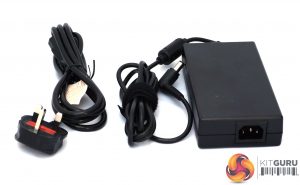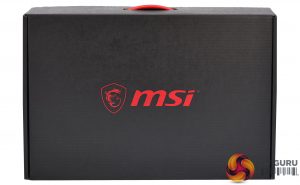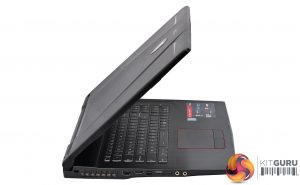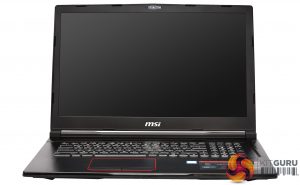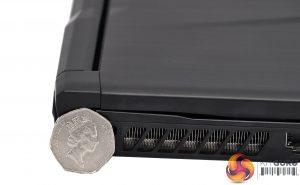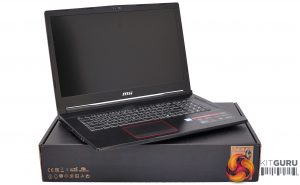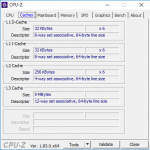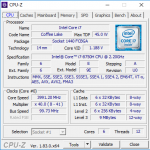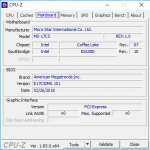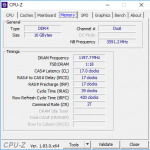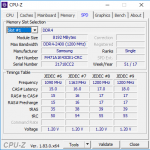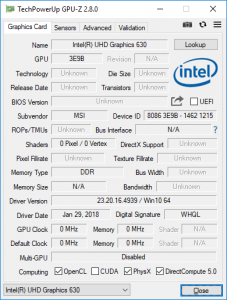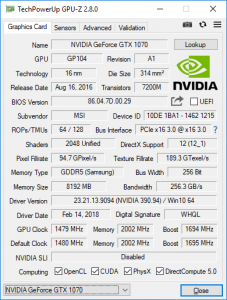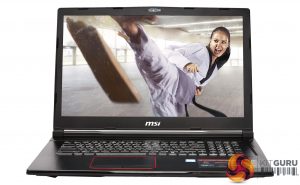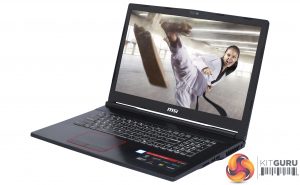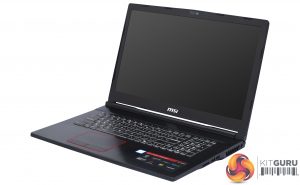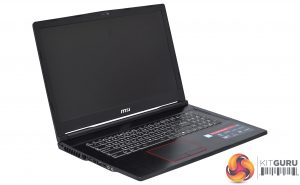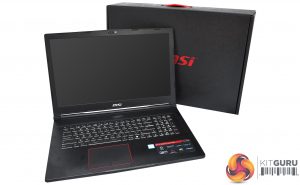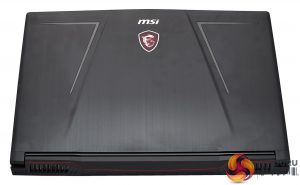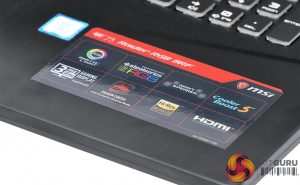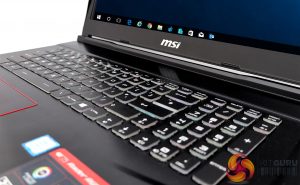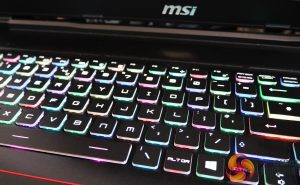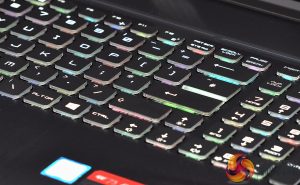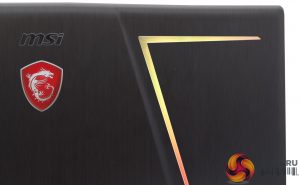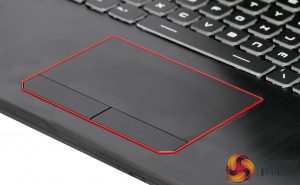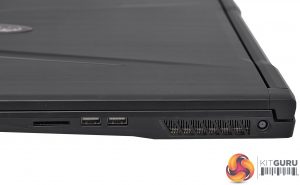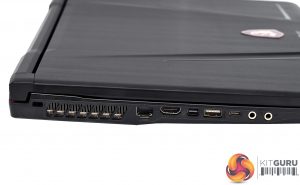The MSI GE73 Raider RGB 8RF doesn't arrive in as ostentatious a box as you might imagine. But then it's what's inside that matters.
There's not much in the box, either, other than the hefty power brick and associated mains cable.
Although this is a big notebook, it's not as bulky and bulbous as the largest laptops we've tested. It's definitely a step down in thickness and weight compared to the giant Alienware and Dell XPS 17in and 18in gaming notebooks of yore. But 2.89kg is not a weight you will want to carry about with you just in case you feel like a quick level of Far Cry 5. On the other hand, it does just about fit in a reasonably sized laptop backpack, where fatter notebooks won't.
The predominate theme of the GE73 is black, with just a few flashes of colour in the MSI logo and red line around the trackpad. But then MSI is presumably intending the RGB keyboard lighting to add most of the chromatic interest.
The Intel Core i7-8750H isn't the top member of the current Intel Coffee Lake mobile range. There is, in fact, now a Core i9 member, and the 8750H is the middle of the Core i7 options. But it's still a six-core CPU with Hyper-Threading. The nominal frequency is 2.2GHz, but in reality the processor will rarely run at this speed. A single core can hit 4.1GHz, which will be great for some games, four cores can run at 4GHz, and all six cores can run at 3.9GHz. So it's really a very potent mobile CPU indeed.
The CPU is partnered by a healthy 16GB of 2,400MHz DDR4 memory. That's not as fast as the current desktop speeds, but is still great for a notebook. The memory comes as two SODIMMs, with two slots free for upgrade to the 32GB maximum, although taking the bottom off this notebook isn't meant for end users, according to the “FACTORY SEAL” label on the panel.
As we hinted earlier, the mobile NVIDIA GeForce GTX 1070 is not that far behind the desktop version. In fact, it's almost swings and roundabouts. The basic desktop 1070 runs at a standard 1,506MHz with a 1,683MHz boost, and has 1,920 CUDA cores. The mobile version has a slightly reduced clock running at a standard 1,480MHz with a 1,695MHz boost, but has a greater 2,048 CUDA cores.
The memory allocation and speed are identical, with 8GB of GDDR5 running at 8,000MHz on a 256-bit bus, giving the same 256GB/sec of bandwidth. So overall, there probably won't be that much difference in performance between the two, which is great for a mobile graphics option, particularly when the TDP is 115W rather than 150W for the desktop version.
There's also Intel UHD Graphics 630 from the CPU, which should kick in when the system isn't performing demanding 3D work to reduce power consumption.
The 17.3in screen only offers Full HD (1,920 x 1,080) resolution, and MSI doesn't divulge which panel technology it uses. However, this panel does offer 3ms response times and 120Hz refresh, with a claimed 94 per cent NTSC gamut. The best gaming screens aren't generally the highest resolution, because frame rates trump raw detail, and this screen aims to provide the most fluid motion when playing FPS and racing titles, for example.
The perfect screen would have also had NVIDIA G-Sync and an even lower response. But it's a bright, crisp display with excellent viewing angles (so your friends can watch you play). It's certainly the best notebook screen we've seen for the intended task of providing the most fluid gaming experience possible.
The GE73 is well endowed for storage. There's a decently sized 512GB Samsung PM871a M.2 SSD for the operating system and main software, although it only uses a SATA interface, not the much quicker NVMe. But even this comfortable capacity might fill up quickly now that games take tens of gigabytes each. So it's great that there is also a 1TB HGST Travelstar 7K1000 7,200rpm SATA 2.5in hard disk included as well, which will still be reasonably quick and provides plenty of space for lots of games and other high-volume media content such as video.
The sound is allegedly supplied by a “Giant Speaker” system. This is a bit of an exaggeration, but there is a reasonable amount of bass response for a notebook. The audio quality is still a bit tinny, though. You could share some music with friends in your lounge with sufficient volume, but gamers will usually be wearing headphones anyway.
The 17.3in form factor affords plenty of width for a comfortable keyboard, including a separate keypad. This uses the now virtually universal Chiclet-style design, and the action has a bit more travel than the usual notebook keyboard, which gives it an enjoyably tactile response.
The large trackpad is sensibly placed just about directly beneath the spacebar, rather than centrally for spurious aesthetic reasons. This minimises the chance of accidental mouse movements when typing caused by the heal of your hand, although it doesn't eradicate these completely. It's accurate and smooth, although gamers will almost certainly attach an external mouse when playing. There are two large discrete buttons that are flush with the trackpad itself, but not part of it.
The key feature of the keyboard and trackpad, however, is the per-key RGB lighting system, powered by the SteelSeries Engine 3. By default, this pulses across the spectral range of colour, which is pretty cool in itself. When you press the function key, the keys this affects are highlighted in red whilst the lighting on the others goes off.
The SteelSeries tray icon provides a host of alternative themes, however, with our particular favourite being Disco, which pulses individual keys in a manic fashion that is borderline insane. It's guaranteed to get attention, along the lines of dancing naked in the Vatican. The SteelSeries tray icon also lets you change the lighting for the tick mark-like patterns on the lid (which MSI calls “Mystic Light”), with a similar range of options, including our beloved Disco.
The larger notebook form factors usually allow room for plenty of ports, and the GE73 is reasonably well endowed in this area. The left side is the most well endowed, with headphone and microphone minijacks, USB 3.1 Gen 2 Type C and Type A, Mini DisplayPort, full-sized HDMI, and Gigabit Ethernet. The other side of the air vent is a Kensington lock slot.
The right-hand side merely offers two USB 3.1 Gen 1 (aka USB 3.0) and an SDXC card reader, with the power jack the other side of the air vent.
So, physically this is a solid if not “blingtastic” design, RGB keyboard lighting excepted. Performance is where it's meant to speak most loudly, so let's see how well it does in this respect next.
 KitGuru KitGuru.net – Tech News | Hardware News | Hardware Reviews | IOS | Mobile | Gaming | Graphics Cards
KitGuru KitGuru.net – Tech News | Hardware News | Hardware Reviews | IOS | Mobile | Gaming | Graphics Cards
